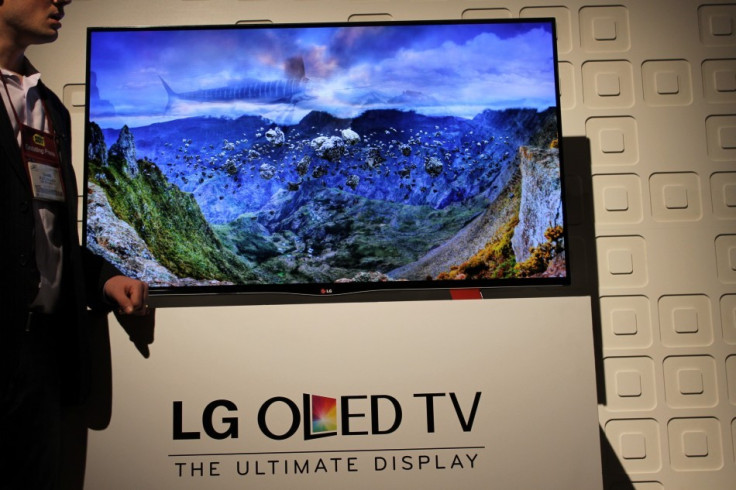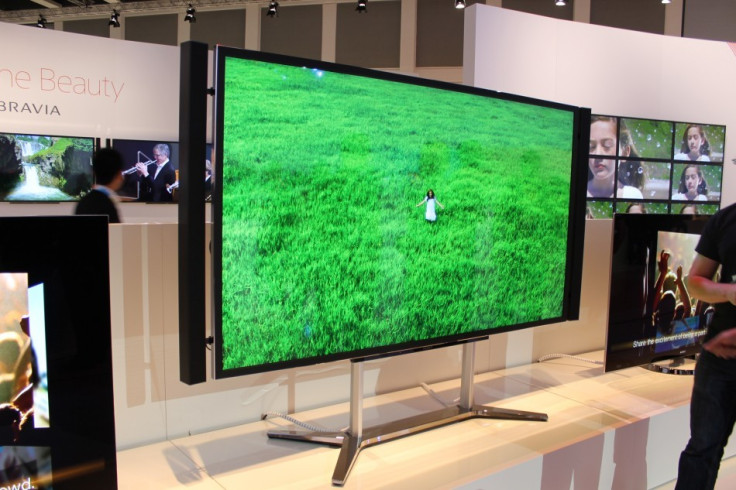CES 2013: Ultra HD, OLED, IGZO - Television Tech Explained
OLED televisions have been around for a few years, but complex manufacturing processes and eye-watering price tags have kept them out of your local branch of Currys. However, at CES 2013 OLED is back, complete with prices and release dates.

So what is OLED, and should I be excited by it?
Organic light-emitting diodes make up an OLED television panel, this is instead of the liquid crystal display (LCD) and plasma technologies of old.
Don't be confused by LED, it might be the current consumer craze, but the acronym of light emitting diode refers to the backlight behind an LCD screen, not the display itself.
With that cleared up, let's look again at OLED and why it should be at the very top of your TV requirements in 2013 and beyond.
You need red, green and blue light to create a television image, and OLED works by putting electricity through certain materials that glow these three colours. Instead of pixels being lit by a backlight, like on LCD televisions, the light comes from the display panel itself.
Getting rid of the backlight makes OLED televisions thinner - much, much, thinner - than regular LCD and plasma TVs; think millimeters rather than centimeters, and the thickest part of the TV by far are the sockets for your Sky box, games console and speakers.
No backlight also means less weight and less electricity usage, while being able to shut off each and every pixel individually creates absolute black - something LCD and plasma screens cannot do, and means OLED is capable of an infinite contrast ratio.
OLED and White OLED

I said earlier that you just need blue, red and green to create a TV image, and that's certainly true, but some manufactures have taken this a step further and introduced White OLED panels, which blend blue, red and green to create white light, then pass that through red, green and blue subpixels.
LG even passes this light through a white filter too, to increase brightness, and all this is happening in each of more than two million pixels on an OLED television with 1080p resolution (1920 x 1080).
The benefits of White OLED is that it's easier and cheaper to manufacturer, which is important, given the time it has taken for the technology to progress from early prototype to the edge of mass production; there is also speculation that W-OLED screens last longer than regular panels.
Finally, it is easier to scale White OLED to different sizes, which means televisions that are larger - and smaller - than the 55in models currently being shown off at CES, making the technology appealing to more consumers.
This also means it can be used for 4K, or Ultra HD televisions - more on those further down the page.
When can I buy one?
For years, OLED televisions have wowed at CES but never made it to our living rooms. Now though, it seems that 2013 could be the year the next generation of TV tech goes on sale, with LG announcing that its 55in model is available for pre-order now, and will ship to the US in March.
At around $12,000, it certainly isn't cheap, but that doesn't matter. Let the one percent of wealthy early adopters go out and buy it. This will encourage Samsung, Sony and others to bring their OLED TVs to market, driving the prices down and making them more affordable for the rest of us.
You mentioned Ultra HD?

Yes, I did. Ultra HD is the term now used to describe 4K, which refers to televisions with a resolution of 3840 x 2160 - four times that of regular 1080p high definition.
I got to see Sony's first Ultra HD television at IFA last August, and again in Harrods when it went on sale in October, and both times the picture quality simply blew me away.
In the same way DVD made VHS look terrible, and HD ran circles around standard definition, Ultra HD is the next big thing in TV quality.
As ever though, the new tech isn't cheap. Sony's 84in Ultra HD Bravia sells for £20,000, and that size is pretty much the norm for 4K screens, although Samsung will soon sell you a 110in model, if 84in is a bit of a strain.
Most TV manufacturers had Ultra HD televisions on their booths at CES this week, but only Sony and Panasonic combined the 4K resolution with an OLED panel, to create prototypes that bring together the two biggest updates to television this decade.
Ultra HD is here now, and will soon be sold by most major TV makers, so the price will no doubt fall over the next couple of years, along with OLED, but screens which combine the two could be some time away yet.
IGZO
Derived from the semiconductor material on which it is based, indium gallium zinc oxide displays produced by Sharp made their debut last summer.
Each pixel of an LCD screen is controlled by its own transistor, and making those transistors out of IGZO helps electrons to move faster, meaning transistors can be made smaller, resulting in space for more pixels - all this means greater pixel density and resolution.
The difference in current flow compared to LCD also means a lower power consumption and less interference from the display, so devices with IGZO touch screens are more accurate and sensitive.
IGZO screens will first appear in smaller devices like smartphones and tablets, before making the move to computer monitors and eventually televisions - all provisioning Sharp can find partners to develop the technology with.
What about 3D?
3D has been the darling of CES for the last couple of years, with manufacturers forcing glasses onto the faces of journalists, keen to show them some 3D sample footage on their new televisions.
But this year 3D has caused less of a stir. Maybe it's because we all expect TVs to come with 3D as standard, or that interest in wearing glasses to watch television hasn't been as strong as first hoped.
Glasses-free (and headache-free) 3D is where everyone wants the industry to go, and it's starting to feel like active and passive glasses were just an intermediate step - enough to part early adopters with their cash, but not enough for everyone else.
3D may disappear quietly until manufacturers remove the glasses, but even if it does, there is a wealth of stunning new technology that is soon to flood the marketplace.
© Copyright IBTimes 2025. All rights reserved.






















